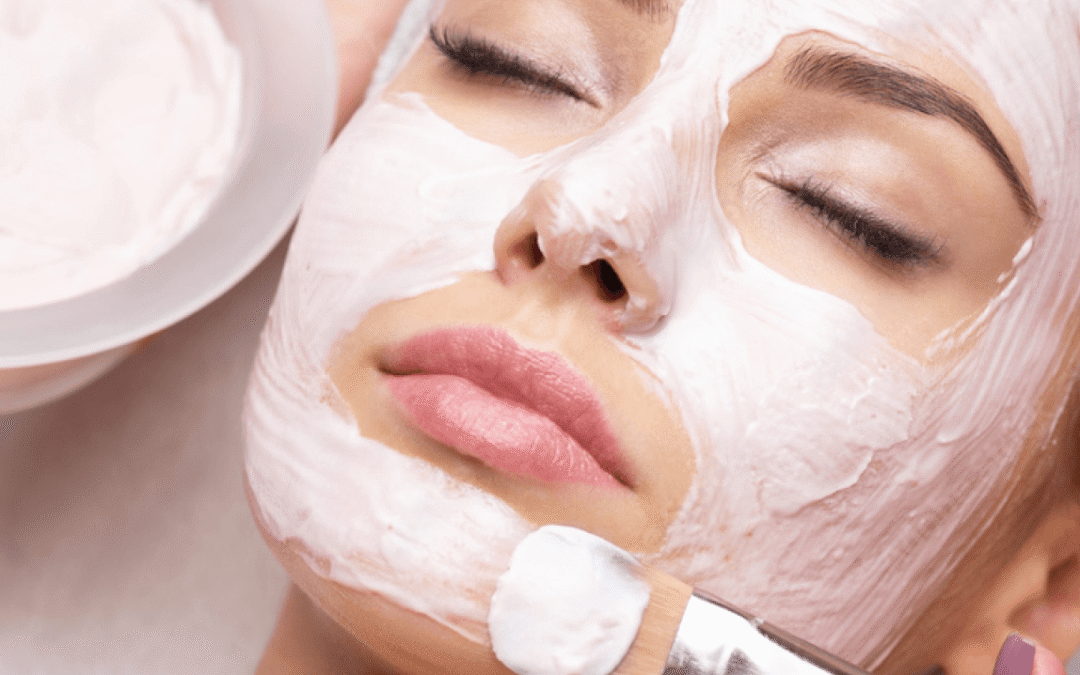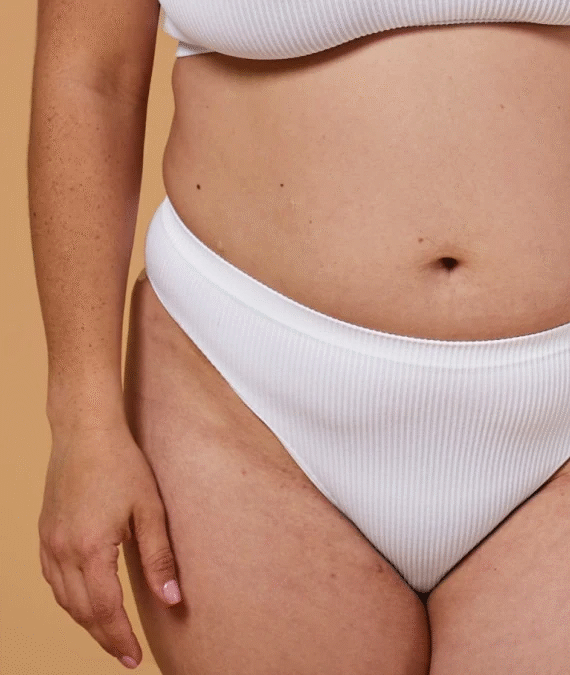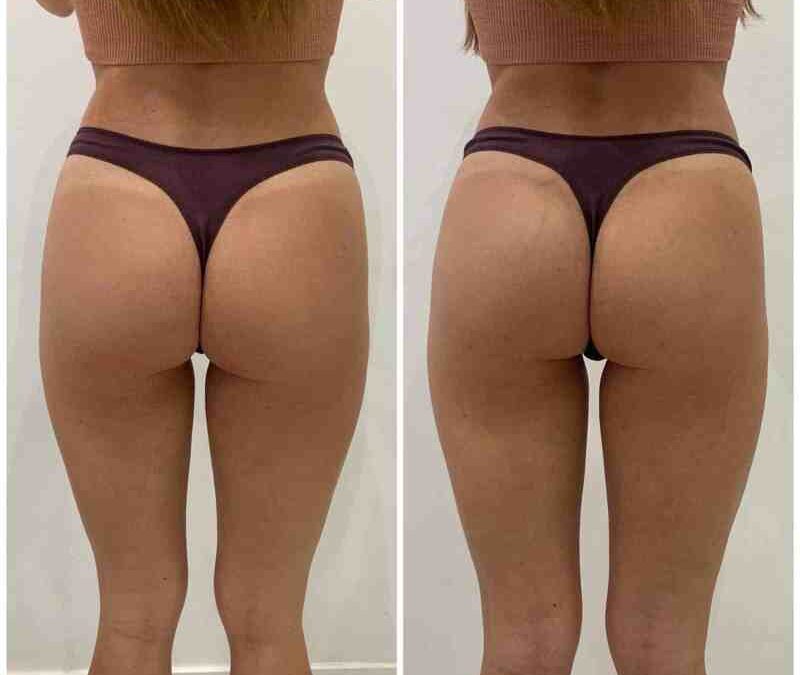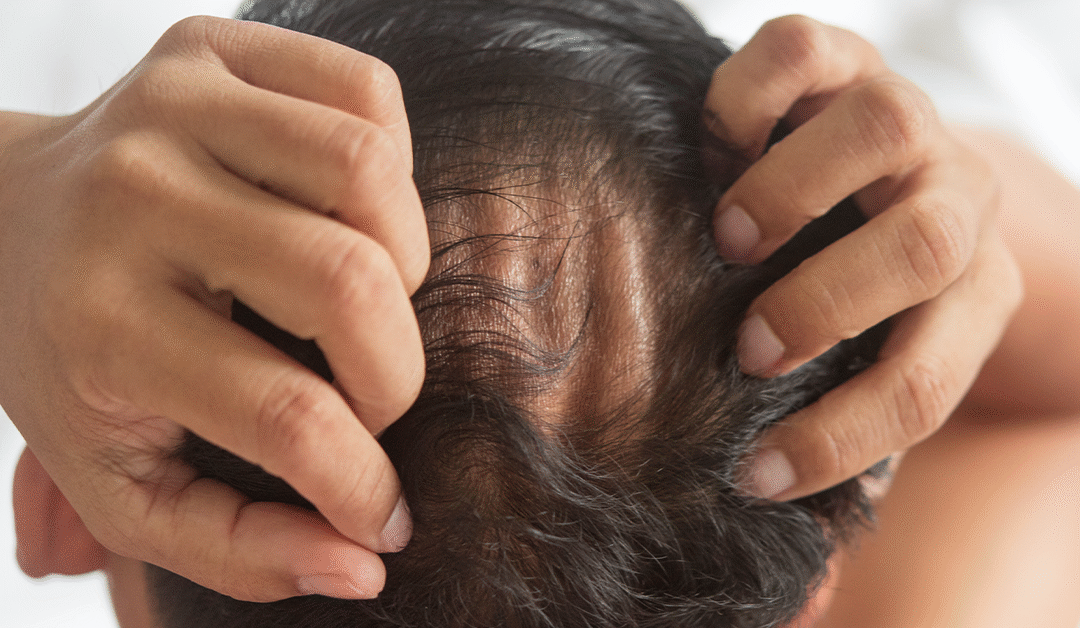
by laraibnaeem2005 | Oct 18, 2025 | Health
One of the most common questions people ask is which skin whitening cream works fast? When you want a brighter, more even complexion, speed and effectiveness matter. But fast results don’t mean compromising safety or skin health. Understanding how whitening creams function and which ingredients promote quicker outcomes can help you choose the right product tailored to your skin’s needs. This article explores the workings, types, and aftercare involved with skin whitening creams that promise faster results, so you can make an informed choice.
What Is The Treatment And How It Works?
Skin whitening in Dubai(تبييض البشرة في دبي) creams work primarily by targeting melanin production in the skin. Melanin is the pigment responsible for dark spots, uneven tone, and hyperpigmentation. Fast-acting whitening creams usually contain ingredients that either inhibit melanin synthesis or accelerate skin cell turnover, revealing fresher, lighter skin beneath.
Popular ingredients known for speed include:
-
Alpha arbutin: Blocks tyrosinase enzyme to reduce melanin
-
Vitamin C: Antioxidant that brightens and evens skin tone
-
Kojic acid: Naturally derived compound that inhibits pigmentation
-
Niacinamide: Reduces pigment transfer to skin cells
How quickly you see results depends on the concentration of active ingredients and your skin type. Many wonder, Can whitening creams show effects in one week? While some improvement can be visible early on, significant changes typically require consistent use over 4–6 weeks.
Importance Of Treatment Consistency And Safety:
Fast-acting whitening creams are appealing but should be used responsibly. Consistency is key; irregular use slows progress and may reduce effectiveness. However, using strong formulations recklessly can cause irritation, redness, or damage.
Important points about treatment frequency:
-
Follow product guidelines strictly to avoid overuse
-
Patch-test new creams to check for sensitivity
-
Never skip sun protection, as UV exposure can worsen pigmentation and reduce whitening effects
A top question is, Is faster always better when it comes to whitening creams? Not necessarily. Balanced, gradual lightening is safer and more sustainable. Quick fixes can sometimes cause rebound pigmentation or skin damage.
Types Of Skin Whitening Creams That Work Fast:
Several whitening creams are formulated to deliver results quickly by combining potent ingredients with skin-soothing agents. These can be broadly categorized as:
-
Brightening serums: Lightweight, concentrated products often absorbed faster with visible early results.
-
Creams with exfoliating agents: Contain mild acids like glycolic acid that speed up skin renewal.
-
Multi-action formulas: Combine antioxidants, tyrosinase inhibitors, and moisturizers to boost efficacy and comfort.
People often ask, Which cream works best for stubborn dark spots? Creams containing a combination of alpha arbutin, kojic acid, and niacinamide generally offer a faster and more noticeable reduction in pigmentation.
Preparation And Aftercare To Maximize Whitening Cream Results:
Using whitening creams for fast results requires more than just application. Proper preparation and aftercare are crucial to prevent irritation and enhance absorption.
Steps to prepare and care for your skin include:
-
Cleansing your face gently to remove impurities
-
Using a toner to restore skin’s natural pH
-
Applying the whitening cream as directed, usually once or twice daily
-
Moisturizing to maintain hydration and skin barrier integrity
-
Applying broad-spectrum sunscreen every morning to protect from UV rays
Frequently asked is, Can I use makeup after applying whitening cream? Yes, but ensure the cream absorbs fully to avoid mixing with makeup and reducing efficacy.
Ideal Candidate And Choosing The Right Product:
Not everyone reacts the same way to whitening creams. Your skin type, sensitivity, and pigmentation level influence which product works fastest for you.
Ideal candidates for fast-acting whitening creams:
-
Have mild to moderate pigmentation issues
-
Are committed to daily skincare routines including sun protection
-
Do not have overly sensitive or reactive skin
When choosing a product, look for:
-
Clear ingredient lists with proven actives
-
Formulas suited to your skin type (dry, oily, sensitive)
-
Positive user reviews highlighting quick, safe results
One important question is, How to choose a whitening cream without harmful ingredients? Avoid products containing hydroquinone or mercury, and opt for creams with natural brightening agents.
Risks, Benefits, And Realistic Expectations:
Using fast-acting Skin whitening Treatment(علاج تبييض البشرة) creams has its pros and cons. Knowing these helps set realistic expectations and promotes safe use.
Benefits:
-
Noticeable brightening within weeks
-
Reduction of dark spots and uneven tone
-
Enhanced skin radiance and smoothness
Risks:
-
Potential irritation if overused or unsuitable for skin type
-
Photosensitivity leading to sun damage without proper protection
-
Possible rebound pigmentation if discontinued suddenly
People frequently ask, Can fast whitening creams cause long-term damage? If used properly with sun protection and as directed, risks are minimal. Overuse or ignoring aftercare increases chances of adverse effects.
Frequently Asked Questions:
Q: How soon can I expect results from fast whitening creams?
A: Typically within 4 to 6 weeks, with gradual improvements starting earlier.
Q: Can I use whitening cream twice daily for faster results?
A: Only if the product instructions allow; otherwise, overuse can irritate.
Q: Are natural ingredients effective in fast whitening creams?
A: Yes, many natural extracts like licorice and vitamin C are effective and gentle.
Q: What should I avoid while using whitening creams?
A: Avoid excessive sun exposure, harsh exfoliants, and products with strong irritants.
Conclusion:
So, which skin whitening cream works fast? The answer depends on your skin type, the active ingredients, and your commitment to a consistent routine paired with sun protection. Creams containing alpha arbutin, vitamin C, and kojic acid are proven to deliver quicker brightening results safely when used correctly. Remember, faster results should never come at the expense of skin health. By choosing the right product and following a careful regimen, you can enjoy a brighter, more radiant complexion in the shortest time possible while keeping your skin safe and healthy.

by laraibnaeem2005 | Oct 17, 2025 | Health
For many individuals undergoing a pubic lift, one of the most common concerns is when can I return to exercise after a pubic lift? Understanding the timeline for resuming physical activity is critical for safe recovery and optimal results. Returning to exercise too soon can jeopardize healing and increase the risk of complications, while waiting too long can affect overall fitness and morale. This detailed article covers the nature of the treatment, its importance, types, preparation and aftercare, ideal candidates, how to choose the right clinic, risks, benefits, FAQs, and offers comprehensive guidance on safely resuming exercise post-surgery.
What Is Pubic Lift Surgery and How It Works?
A Pubic lift surgery in Dubai(جراحة رفع العانة في دبي) is a surgical procedure designed to remove excess skin and tighten the tissue around the pubic area, improving contour and appearance. The treatment is often sought after significant weight loss, pregnancy, or due to aging, which can leave the skin loose or sagging. The surgery involves making precise incisions, removing redundant skin, and repositioning the tissue to achieve a firmer, more youthful look.
The importance of the treatment lies in its ability to restore confidence and comfort, particularly in intimate situations or when wearing fitted clothing. Proper post-surgical care, including understanding when to safely return to exercise, plays a vital role in preserving these benefits and preventing complications.
Types of Pubic Lift Treatments and Impact on Recovery:
Pubic lift surgeries vary in complexity, which directly affects recovery time and when exercise can be resumed:
-
Standard Pubic Lift: Involves skin excision and tissue tightening, typically with moderate recovery time.
-
Liposuction-Assisted Pubic Lift: Combines fat removal with skin tightening; may require additional healing for liposuction sites.
-
Extended Pubic Lift: Addresses a broader area including the lower abdomen; recovery tends to be longer.
-
Non-Surgical Options: Such as laser or radiofrequency treatments, with minimal downtime but less dramatic results.
Your surgeon will determine which approach suits your needs, and this will influence the timeline for returning to physical activity.
Preparation and Aftercare: Ensuring Safe Return to Exercise
Proper preparation before surgery and diligent aftercare are essential for a smooth recovery and timely return to exercise:
Adhering to these guidelines will promote healing and reduce setbacks.
Ideal Candidate and Choosing the Right Clinic for Pubic Lift Surgery:
An ideal candidate for Pubic lift surgery Treatment(علاج جراحة رفع العانة) is someone who:
-
Has excess or sagging skin in the pubic area affecting aesthetics or comfort.
-
Is in good general health without conditions that impair healing.
-
Maintains realistic expectations about the surgery and recovery.
-
Commits to following pre- and postoperative instructions, including exercise limitations.
When selecting a clinic and surgeon, prioritize:
-
Board certification and expertise in pubic lift procedures.
-
Positive patient outcomes and testimonials.
-
Clear communication about recovery timelines and exercise restrictions.
-
Supportive post-surgery follow-up care.
These factors ensure not only the success of the surgery but also a safe, guided return to your fitness routine.
Risks and Benefits Related to Exercise After Pubic Lift:
Risks of Early Exercise:
-
Delayed wound healing or wound opening.
-
Increased swelling or bruising.
-
Infection due to strain on incisions.
-
Increased pain or discomfort.
-
Potential for unsatisfactory aesthetic results.
Benefits of Properly Timed Exercise Resumption:
-
Improved circulation promoting healing.
-
Enhanced mood and mental well-being.
-
Maintained or improved overall fitness.
-
Better long-term surgical outcomes.
Balancing these risks and benefits through a clear recovery plan is essential.
Frequently Asked Questions (FAQs):
Q: When can I start walking after a pubic lift?
A: Light walking is usually encouraged within a few days to prevent blood clots and improve circulation, but avoid overexertion.
Q: How long should I wait before resuming strenuous exercise?
A: Most patients can gradually resume moderate exercise after about 4-6 weeks, depending on individual healing.
Q: Can I do abdominal exercises soon after surgery?
A: Abdominal and core exercises are typically postponed for at least 6 weeks to avoid stress on the surgical area.
Q: What signs indicate I should pause exercise and consult my surgeon?
A: Excessive pain, swelling, redness, discharge, or fever require immediate medical attention.
Q: Does type of exercise matter during recovery?
A: Yes, low-impact activities like walking or gentle stretching are preferred initially over running, weightlifting, or high-intensity workouts.
Conclusion:
Answering the question, when can I return to exercise after a pubic lift? depends largely on the individual procedure, healing progress, and adherence to medical advice. While light activities like walking can often start within days, returning to intense exercise generally takes about 4-6 weeks or longer. Choosing the right clinic and surgeon, preparing adequately, following post-operative care, and respecting your body’s signals are all critical for a safe and successful return to fitness. By doing so, you protect your investment in the surgery, promote optimal healing, and enjoy the benefits of a rejuvenated pubic contour combined with a healthy, active lifestyle.

by laraibnaeem2005 | Oct 17, 2025 | Health
In today’s beauty landscape, people are constantly searching for ways to enhance their bodies with minimal downtime and natural-looking results. One of the most frequently asked questions among those exploring body contouring is can you combine a non surgical bum lift with other treatments. This inquiry has become increasingly relevant as non-invasive procedures continue to evolve, offering options to customize and amplify results. The non surgical bum lift is already popular for its ability to firm, lift, and tone the buttocks without surgery—but combining it with complementary treatments can take the outcome to another level. Understanding how these procedures work together can help you achieve balanced, harmonious body enhancement safely and effectively.
What Is The Treatment And How It Works?
A Non Surgical Bum Lift in Dubai(رفع المؤخرة بدون جراحة في دبي) works by tightening and lifting the buttocks using non-invasive technology such as ultrasound, radiofrequency, vacuum therapy, or collagen-stimulating injections. These methods trigger collagen production and improve skin elasticity, giving a firmer, more sculpted appearance over time.
When combined with other treatments, the effects can be even more transformative. For example, pairing a bum lift with skin tightening, cellulite reduction, or fat freezing procedures helps target multiple concerns at once. The synergy between these treatments allows for comprehensive enhancement—lifting, smoothing, and defining the lower body without the risks associated with surgery. The key is to schedule them strategically so that each complements the other, supporting your skin’s natural healing and rejuvenation processes.
Types Of Treatment:
There are several non surgical bum lift techniques and combinations that deliver exceptional results. The choice depends on your goals, body type, and skin condition. Some popular pairings include:
-
Vacuum therapy with radiofrequency: Lifts and firms while improving circulation and texture.
-
Ultrasound toning with cellulite reduction: Tightens deep tissue and smooths dimples.
-
Collagen-stimulating injections with skin tightening: Builds volume gradually while enhancing firmness.
-
Fat freezing with a non surgical lift: Targets stubborn fat deposits to contour and lift simultaneously.
-
Laser skin therapy: Refines skin texture, evening out tone and smoothness.
Each treatment combination must be customized to suit individual needs, ensuring safety and harmony between technologies for maximum benefit.
Preparation And Aftercare:
Proper preparation for a non surgical bum lift combined with other procedures ensures smoother results and reduces post-treatment discomfort. Here’s what to keep in mind before your session:
-
Stay hydrated for several days prior.
-
Avoid caffeine, alcohol, and smoking before treatment.
-
Wear loose, breathable clothing on the day of your appointment.
-
Discuss your recent medical or aesthetic treatments to prevent any overlap or irritation.
Aftercare is equally important when combining multiple treatments. You should:
-
Avoid hot baths, saunas, and heavy workouts for at least 48 hours.
-
Keep the treated area clean and moisturized.
-
Follow any specific post-treatment guidelines for individual procedures.
-
Maintain a healthy lifestyle and hydration to extend your results.
Following these steps allows your skin and tissues to recover naturally while enhancing the longevity of your new contour.
Ideal Candidate And How To Choose The Right Clinic:
The ideal candidate for non surgical bum lift combination treatments is someone seeking a refined, natural enhancement without downtime. Candidates typically have mild to moderate skin laxity, minimal cellulite, or localized fat deposits they wish to improve. This approach suits individuals who prefer gradual, realistic improvements over dramatic changes.
When selecting where to have the procedure, focus on facilities that specialize in advanced non-invasive aesthetic technologies. Ensure the staff are trained and certified in performing combination treatments safely. Research the devices used, check before-and-after results, and verify that hygiene standards are maintained. Selecting a reputable provider with expertise in layered treatments ensures that each procedure complements the next and provides balanced, beautiful results.
Risks, Benefits, And FAQs:
Combining Non Surgical Bum Lift Treatment(علاج رفع المؤخرة بدون جراحة) with other treatments is generally safe, but it’s important to be aware of potential side effects. Temporary redness, swelling, or mild soreness can occur after the session but usually subside quickly. The biggest benefit of combining procedures is achieving comprehensive body contouring in less time, targeting multiple issues at once while avoiding surgery.
Benefits include:
-
Enhanced firmness and lift
-
Reduction of cellulite and sagging
-
Improved skin smoothness and tone
-
Customizable treatment plans for specific goals
-
Minimal discomfort and no downtime
Possible risks include:
FAQs:
1. Can I have other treatments on the same day? Yes, but your practitioner will decide the best sequence and timing for optimal results.
2. How long do results last? Typically, effects last 12–24 months depending on the chosen combination and maintenance routine.
3. Is there any pain involved? Most treatments are gentle, with only mild warmth or tingling sensations.
4. When can I exercise again? Light activity can resume after 48 hours, but strenuous workouts should wait a few days.
5. How soon will I see improvement? Results can appear gradually over several weeks as collagen production increases and tissues firm.
Conclusion:
Knowing can you combine a non surgical bum lift with other treatments gives you the confidence to design a body contouring plan that matches your vision perfectly. By combining technologies that lift, smooth, and tone, you can achieve enhanced curves and skin quality without the need for invasive surgery. Whether your goal is to refine shape, reduce cellulite, or improve firmness, the right combination approach offers noticeable, natural-looking results. Always follow preparation and aftercare recommendations, choose an experienced aesthetic professional, and maintain a healthy lifestyle to enjoy long-lasting beauty and confidence in your silhouette.

by laraibnaeem2005 | Oct 16, 2025 | Health
One of the most frequently asked questions in hair restoration is whether hair cloning works for genetic hair loss. Androgenetic alopecia, commonly known as male or female pattern baldness, is largely influenced by genetics and hormone sensitivity. Hair cloning offers a promising approach to treat this condition by regenerating hair follicles from a patient’s own cells, potentially providing a long-term solution even when traditional treatments fall short. Understanding how the procedure works, its effectiveness, and the considerations involved is essential for anyone considering hair cloning for genetic hair loss.
What Is Treatment And How It Works?
Hair cloning in Dubai(استنساخ الشعر في دبي) begins with extracting healthy follicular cells, typically dermal papilla cells, from donor regions that are resistant to hair loss. These cells are cultured in a laboratory to multiply, creating new hair follicles. Once the follicles reach sufficient numbers, they are implanted into areas affected by thinning or balding.
The newly implanted follicles then enter the natural hair growth cycle, including anagen (growth), catagen (transition), and telogen (resting) phases. Since the follicles originate from genetically stable donor hair, they are often resistant to the hormonal effects that cause genetic hair loss, allowing for sustainable growth even in areas prone to thinning.
Importance Of Hair Cloning Treatment:
The significance of hair cloning treatment for genetic hair loss is substantial. Conventional methods like medication or traditional transplants may slow hair loss or redistribute existing hair, but they cannot generate unlimited new follicles. Hair cloning addresses this limitation by multiplying cells from a small donor area to produce a large number of follicles, effectively increasing scalp coverage and restoring density.
Benefits specific to genetic hair loss include:
-
Permanent solution: New follicles may be resistant to androgenetic effects.
-
Natural appearance: Cloned hair integrates seamlessly with existing strands.
-
Comprehensive coverage: Allows treatment of extensive bald areas that traditional transplants cannot fully address.
-
Reduced dependency on donor hair: Maximizes results even in patients with limited donor zones.
Types Of Hair Cloning Techniques:
Various hair cloning techniques can impact effectiveness for genetic hair loss:
-
Stem Cell-Based Cloning: Uses pluripotent stem cells to generate multiple follicles, ideal for larger areas affected by genetic thinning.
-
Dermal Papilla Cell Multiplication: Expands follicle-forming cells for consistent density, effective in treating patterned baldness.
-
3D Follicular Engineering: Combines cells with scaffolds to replicate natural follicle architecture, supporting robust integration in genetically sensitive areas.
The technique used influences both the speed of hair regrowth and the degree of density achievable.
Preparation And Aftercare:
Proper preparation and aftercare are vital to maximize hair cloning results in genetic hair loss cases:
Preparation:
-
Ensure a healthy scalp free of infections or inflammation.
-
Avoid substances such as alcohol or tobacco that may impede healing.
-
Maintain a balanced diet to support cell regeneration.
-
Disclose any underlying medical conditions to prevent complications.
Aftercare:
-
Protect the scalp from trauma and excessive sun exposure.
-
Avoid strenuous activity during initial recovery.
-
Use gentle shampoos and avoid harsh chemicals.
-
Attend scheduled follow-ups to monitor follicle integration and hair growth progress.
Adhering to these steps increases the likelihood that new follicles thrive, especially in areas predisposed to genetic hair loss.
Ideal Candidate For Hair Cloning:
The ideal candidate for Hair cloning(استنساخ الشعر) in cases of genetic hair loss includes:
-
Men or women experiencing patterned baldness or thinning due to genetics.
-
Individuals with healthy donor follicles resistant to androgenetic effects.
-
Patients in good overall health with realistic expectations for regrowth.
-
Those willing to follow pre- and post-procedure care to maximize results.
Identifying suitable candidates helps ensure that the procedure is effective and long-lasting.
How To Choose The Right Clinic?
Choosing the right clinic is essential for success, especially for genetic hair loss:
-
Experience: Select clinics with a proven record in hair cloning and regenerative hair restoration.
-
Advanced Technology: Laboratories capable of precise cell culture and follicle implantation support consistent results.
-
Patient Feedback: Review documented outcomes and testimonials, specifically for genetic hair loss cases.
-
Comprehensive Consultation: Clinics should provide guidance on expected results, potential limitations, and recovery protocols.
A qualified clinic ensures that follicles are handled carefully and implanted with precision to maximize survival and growth in genetically affected areas.
Risks And Benefits:
Understanding the risks and benefits is critical:
Benefits:
-
Potential to regenerate hair resistant to genetic hair loss.
-
Natural-looking coverage with improved density.
-
Permanent long-term results when follicles integrate successfully.
-
Ability to treat areas with limited donor hair.
Risks:
-
Temporary redness, swelling, or mild discomfort at donor or implantation sites.
-
Initial shedding of implanted follicles before growth begins.
-
Individual variability in follicle survival and growth rate.
-
Minor scalp irritation or tenderness as follicles integrate.
Most risks are temporary and manageable with proper care, making hair cloning a safe option for genetic hair loss.
Frequently Asked Questions:
1. Can hair cloning stop genetic hair loss?
While it cannot alter underlying genetics, it can generate follicles resistant to androgenetic effects, effectively restoring density.
2. How long until results appear?
Initial growth may appear within 3–6 months, with full results visible in 9–12 months.
3. Is it effective for both men and women?
Yes, hair cloning can treat genetic hair loss in all genders with healthy donor follicles.
4. Are multiple sessions necessary?
Larger bald areas may require additional sessions for optimal coverage and density.
5. Do side effects affect outcomes?
Mild temporary effects usually do not impact long-term follicle survival or growth.
Conclusion:
In conclusion, hair cloning works for genetic hair loss by regenerating follicles from genetically stable donor cells, offering a permanent, natural-looking solution. While results depend on individual factors, preparation, and technique, this advanced approach provides hope for those affected by androgenetic alopecia, delivering effective density, coverage, and long-term hair restoration.

by laraibnaeem2005 | Oct 15, 2025 | Health
Neck darkening is a common skin concern, often resulting from pigmentation, sun exposure, hormonal changes, or friction. Many individuals successfully lighten their Dark neck whitening treatment in Dubai(علاج تبييض العنق الداكن في دبي) with treatments, but maintaining results is equally important. Understanding how to prevent the neck from getting dark again ensures lasting brightness and even skin tone while avoiding recurrence of pigmentation issues.
What Is Treatment And How It Works?
Maintaining a light and even-toned neck involves a combination of prevention strategies and continued care:
-
Sun Protection: UV exposure stimulates melanin production, which can darken the skin. Using broad-spectrum sunscreen prevents recurrence.
-
Moisturization: Hydrated skin maintains elasticity and reduces rough patches that accumulate pigmentation.
-
Pigmentation Control: Lightening creams, antioxidants, and serums help manage melanin levels.
-
Exfoliation: Gentle exfoliation removes dead skin cells that can make the neck appear darker over time.
The importance of these measures lies in not only preserving treatment results but also preventing further pigmentation, making maintenance a key step in skin health.
Types Of Treatment:
Preventive measures often complement past or ongoing neck whitening treatments:
Topical Maintenance Creams:
-
Include antioxidants, niacinamide, and vitamin C to reduce pigmentation buildup.
-
Used daily to sustain brightness and prevent melanin overproduction.
Sunscreens:
Gentle Exfoliation:
Lifestyle Adjustments:
-
Wearing protective clothing, scarves, or collars reduces friction and sun exposure.
-
Maintaining proper hydration and a balanced diet supports skin health.
Using these approaches together ensures a comprehensive strategy for preventing the neck from darkening again.
Preparation And Aftercare:
Prevention begins with proper preparation and daily aftercare:
-
Preparation:
-
Keep the neck clean and exfoliate 1–2 times per week.
-
Avoid harsh chemicals that may irritate and trigger pigmentation.
-
Apply sunscreen as part of your morning routine.
-
Aftercare:
-
Reapply sunscreen every 2–3 hours if exposed to sunlight.
-
Maintain hydration with moisturizers or serums containing hyaluronic acid.
-
Avoid friction from tight clothing, jewelry, or excessive rubbing.
Following these steps minimizes the risk of pigmentation returning and extends the results of previous treatments.
Ideal Candidate:
The ideal candidate for preventing Dark neck whitening treatment(علاج تبييض العنق الداكن) includes those who:
-
Have previously undergone treatment for neck pigmentation.
-
Commit to a consistent skincare routine including sunscreen, moisturizers, and lightening agents.
-
Understand the role of lifestyle adjustments such as diet, hydration, and sun protection.
-
Can monitor their skin for early signs of darkening and respond promptly.
Recognizing the ideal candidate ensures effective maintenance and helps dispel myths about inevitable pigmentation recurrence.
How To Choose The Right Products?
Selecting the right preventive products is critical:
-
Look for broad-spectrum sunscreen suitable for daily use.
-
Choose creams and serums with proven brightening and antioxidant ingredients.
-
Select gentle exfoliants appropriate for your skin type to prevent irritation.
-
Ensure products are compatible with sensitive neck skin and free from harsh chemicals.
Proper product selection supports long-term results and avoids exacerbating pigmentation issues.
Risks:
While preventive measures are generally safe, some considerations include:
-
Possible irritation from new creams or chemical exfoliants.
-
Sensitivity to sunscreen ingredients, requiring patch testing.
-
Temporary dryness if hydration is neglected.
-
Inconsistent application may reduce effectiveness, allowing pigmentation to return.
Understanding these risks ensures safe and effective maintenance strategies.
Benefits:
Implementing preventive strategies offers numerous advantages:
-
Sustains a brighter, even-toned neck for longer periods.
-
Reduces the frequency of intensive whitening treatments.
-
Protects skin from environmental damage, including UV rays and pollution.
-
Improves overall skin health and texture.
-
Boosts confidence by maintaining a smooth and uniform neck appearance.
Prevention enhances the longevity of results and minimizes recurrence, making it a crucial part of neck care.
FAQs:
Q: How often should sunscreen be applied to prevent neck darkening?
A: Sunscreen should be applied daily and reapplied every 2–3 hours if exposed to sunlight.
Q: Can diet affect neck pigmentation?
A: Yes, a balanced diet rich in antioxidants, vitamins, and hydration supports skin health and prevents pigmentation.
Q: Are preventive creams necessary after professional treatments?
A: Yes, they help maintain results and reduce the risk of recurrence.
Q: How soon can pigmentation return without maintenance?
A: It depends on lifestyle and sun exposure, but pigmentation may start returning within weeks if preventive measures are neglected.
Conclusion:
Preventing the neck from getting dark again involves a combination of consistent skincare, sun protection, hydration, exfoliation, and lifestyle adjustments. While treatments can lighten pigmentation initially, maintaining results requires proactive measures to control melanin, avoid friction, and protect skin from environmental factors. Understanding how to prevent the neck from getting dark again, selecting suitable products, and following proper aftercare ensures lasting brightness, even skin tone, and healthier neck skin. Preventive care empowers individuals to sustain their results confidently while minimizing the need for repeated intensive treatments.





